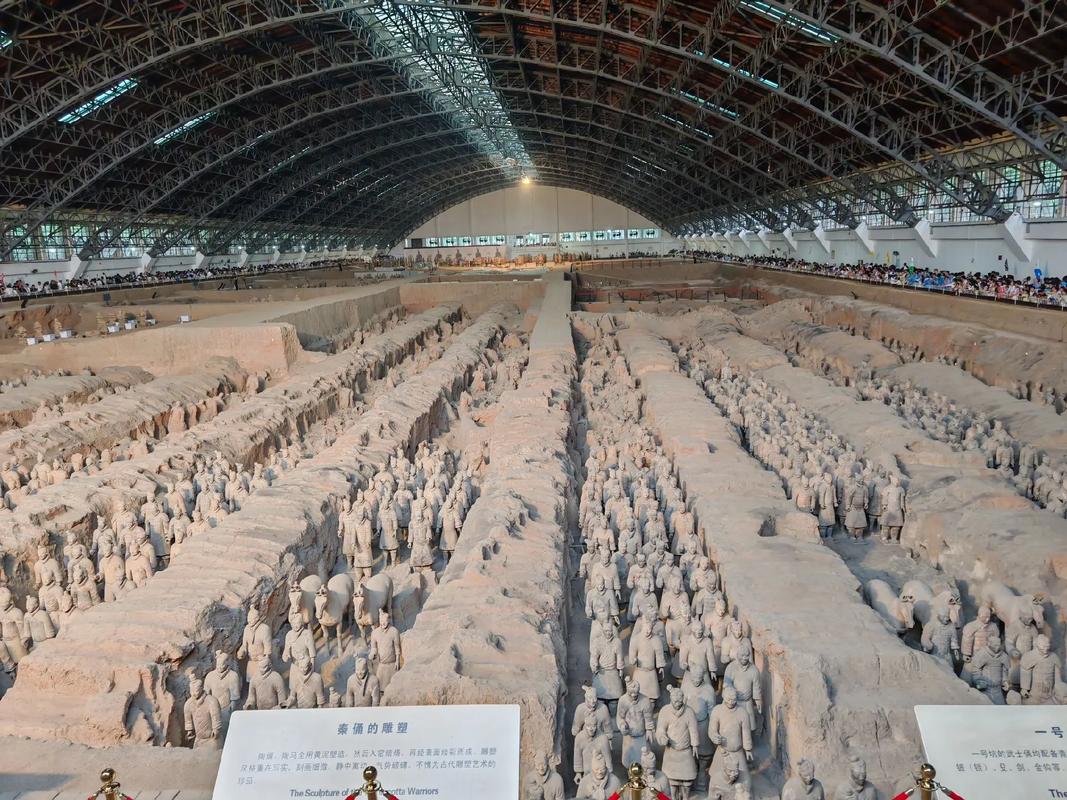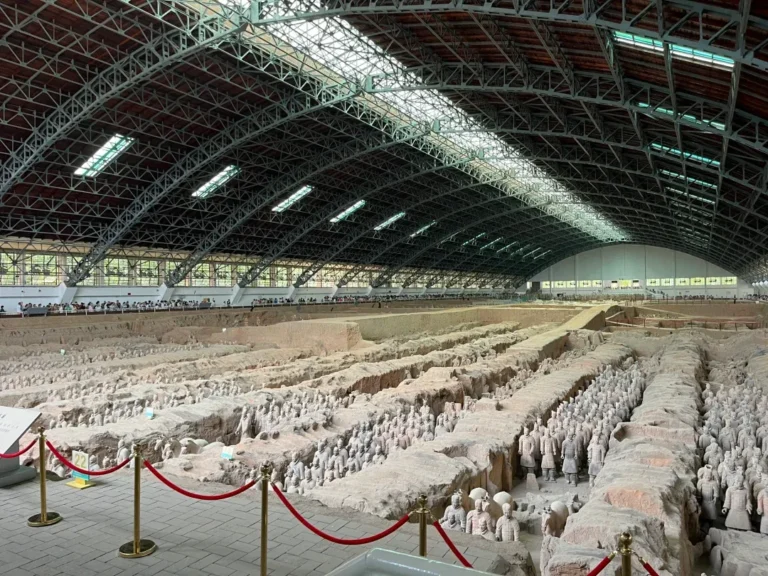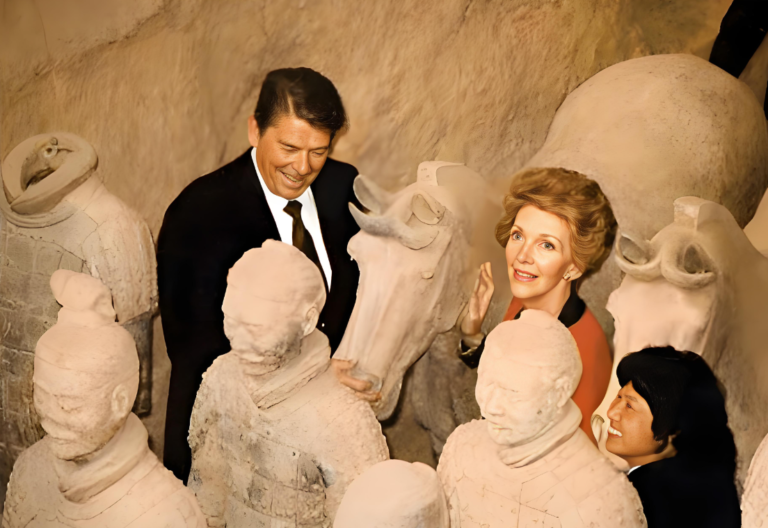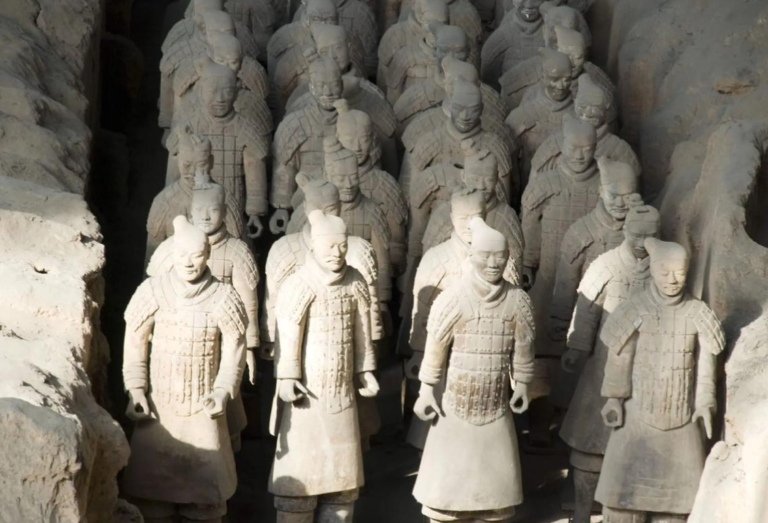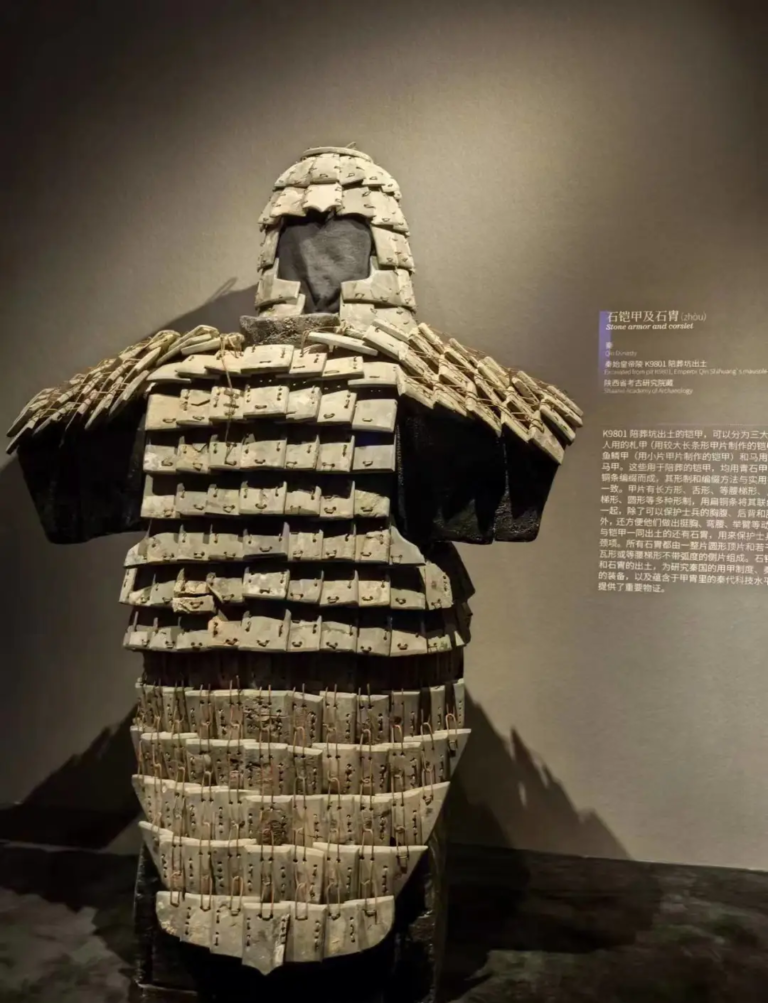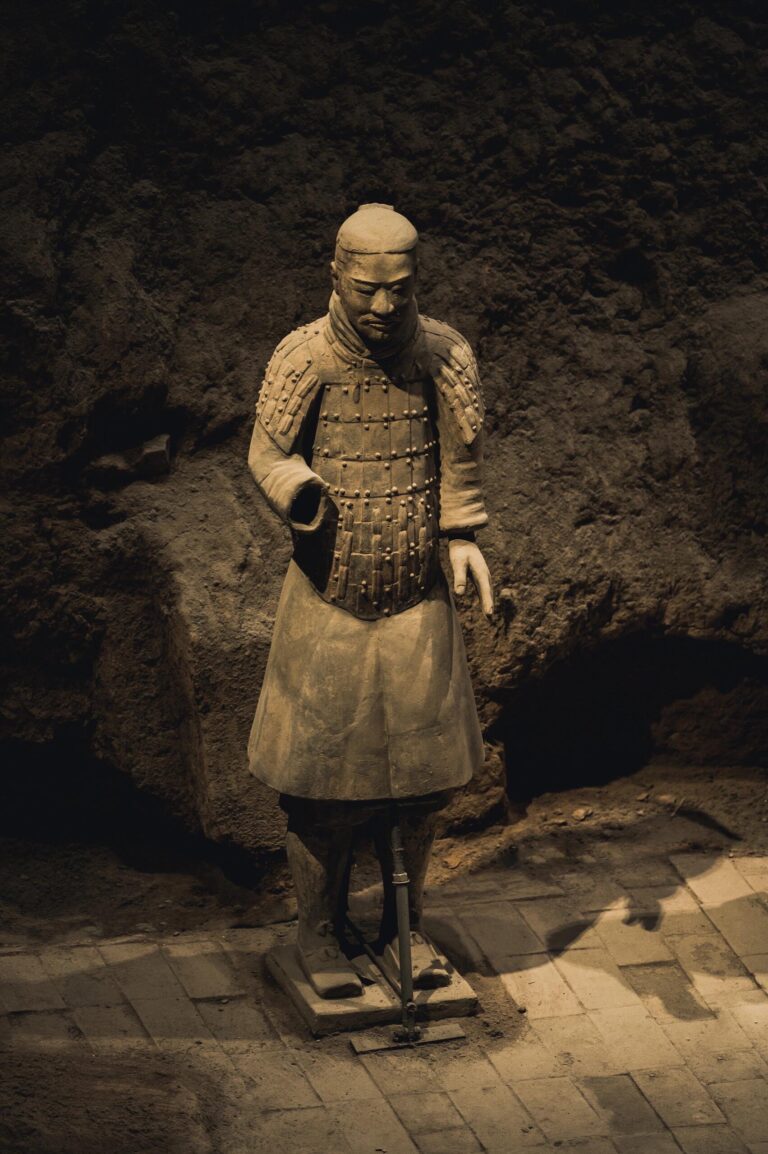How many football fields is the Terracotta Army?
How large is the sleeping underground army? Measuring Qin Shi Huang’s terracotta warriors with a football field
Today, as we stand by the magnificent Terracotta Army pits and face this “underground army” from over 2,000 years ago, many people can’t help but marvel, “Just how big is this place?” That’s a great question! To give everyone a more intuitive sense of its scale, we’ll use a familiar reference point for Americans—a football field—to measure the size of the Terracotta Army.
Part One: The Enormous Scale in Numbers
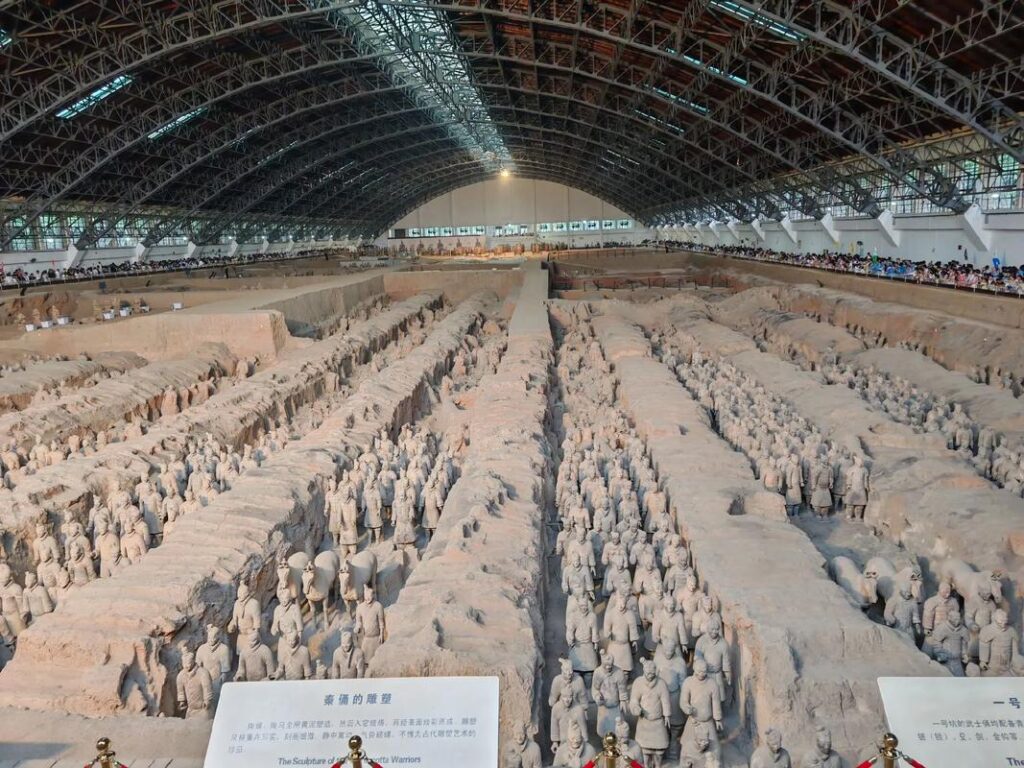
The Terracotta Army Museum primarily consists of three excavated and publicly accessible burial pits, which we refer to as Pit 1, Pit 2, and Pit 3. They are like three massive “military camps” that Qin Shi Huang arranged to guard his tomb underground.
Pit 1: This is the earliest discovered and largest of the pits. How long and wide is it? It measures 230 meters east-west (equivalent to the length of two and a half American football fields end-to-end) and 62 meters north-south. Its total area reaches 14,260 square meters. How many football fields is that? A standard international football field (such as those used in the World Cup) has an area of approximately 7,140 square meters. Thus, the area of Pit 1 alone is equivalent to two standard football fields! Standing at its edge, you can barely see the end.
Pit 2: Located north of Pit 1, it has an L-shaped form. Its longest east-west dimension is 96 meters, and its widest north-south dimension is 84 meters. Its area is approximately 6,000 square meters. In terms of soccer fields, Pit 2’s area is roughly equivalent to one standard soccer field (about 85% of 7,140 square meters).
Pit 3: This is the smallest of the three pits, located on the northwest side of Pit 1. It resembles an indented “U” shape. It is only 17.6 meters wide from east to west and 21.4 meters long from north to south, with a very small area of approximately 520 square meters. This is roughly equivalent to the small area near the corner flag of a football field, or less than one-tenth of a football field.
What is the total area when added together?
Let’s add up the areas of the three pits:
Pit 1 (14,260 square meters) + Pit 2 (6,000 square meters) + Pit 3 (520 square meters) = approximately 22,780 square meters in total.
How many football fields does this 22,780-square-meter total area equate to? Dividing by the standard football field area (7,140 square meters), the result is approximately 3.2. In other words, the total area of the three pits currently open to the public at the Terracotta Army is slightly larger than three standard football fields!
Part Two: More Than Just Numbers—A Stunning Visual Space
Talking about numbers and football fields alone may not fully convey the immersive awe of the experience. Imagine:
1. Standing at the edge of Pit 1: It’s like standing at the edge of two massive football fields side by side and looking down. However, instead of seeing green fields and players, you see thousands of life-sized terracotta soldiers and horses arranged in a disciplined, battle-ready formation stretching as far as the eye can see. The sheer grandeur of the scene is something no photo or video can fully capture.
2. Understanding the “pin” formation: These three pits were not dug randomly; they form a “pin” shaped military formation. The largest “two football fields” (Pit 1) houses the main infantry and chariot units; the adjacent “nearly one football field” (Pit 2) comprises elite mobile forces combining crossbowmen, cavalry, and chariots; and the tiny “corner flag area” (Pit 3) serves as the command center for the entire army. This meticulously designed layout demonstrates the high level of organization and combat effectiveness of the Qin army.
3. A hint of the “tip of the iceberg”: It is important to note that the “3.2 football fields” we see today are far from the entirety of the Terracotta Army at Emperor Qin Shi Huang’s mausoleum! Archaeologists have detected other unexcavated burial pits around the mausoleum, estimated to contain approximately 6,000 more terracotta figures buried underground. The entire mausoleum area resembles a vast underground city, with the terracotta warrior pits serving as the “garrison forces” defending the “imperial capital.”
Part Three: Each “Field” Offers a Unique Landscape
Pit One (two football fields): This is the main formation of infantry and chariots. You can see the vanguard (facing east), the main column, and the flanking rear guards. Thousands of restored terracotta warriors are arranged in formation here, creating a majestic sight. In the rear of the pit, you can also see numerous terracotta warrior fragments awaiting restoration, giving you a vivid sense of the arduousness and grandeur of archaeological work—each standing warrior is meticulously reconstructed by文物修复师 (cultural relic restoration experts) over months or even years, piecing together hundreds or thousands of fragments like a giant 3D puzzle.
Pit 2 (approximately the size of a football field): This is the essence of the terracotta warriors, showcasing the ancient wisdom of multi-troop coordination in battle. Although most areas have not been extensively excavated for the sake of preserving the artifacts (especially due to concerns that color preservation techniques are not yet perfect), only partial displays have been made (such as the famous kneeling archers, standing archers, cavalry figures, and general figures, all of which were unearthed or displayed here). You can learn how the crossbowmen formations, chariot formations, mixed chariot-infantry-cavalry formations, and cavalry formations were cleverly combined to achieve both offensive and defensive capabilities.
Pit Three (a small corner area): Though small in size, it holds a significant status. This is the “command center” of the entire underground army. The warrior terracotta figures in the pit are not facing outward in preparation for battle but are arranged in a circular formation, facing inward, as if guarding and awaiting orders. Important ceremonial weapons were also unearthed here.
Part Four: The Challenge of Protecting the “Giant Stadium”
Imagine the difficulty of protecting and maintaining an underground museum site larger than three football fields.
Environmental Control: The terracotta warriors are extremely sensitive to air humidity, temperature, and pollutants (such as dust and acidic gases). Especially the painted warriors (the gray color you see now is the natural clay color; when they were first unearthed, they were vibrantly colored!), their colors can curl and peel off within minutes if the environment changes. Scientists constructed a massive protective hall and employed high-tech “air curtains” (similar to those found at supermarket freezer entrances) to create an invisible wall of high-speed airflow, blocking over 90% of pollutants and heat from entering the pits and creating a relatively safe microenvironment for the terracotta warriors.
Restoration Challenges: The terracotta warriors did not remain intact over the centuries. Historically, they have suffered destruction, fire, and over 2,200 years of soil pressure, leaving them in fragments when unearthed. Restoring a single ordinary terracotta warrior typically requires 2–3 experts working for 8–10 months! Those with more fragments may take over a year. The neatly aligned soldiers you see in Pit 1 are the result of countless days and nights of diligent effort by restorers.
The impact of visitors: This magnificent spectacle attracts millions of visitors each year. However, the crowds also pose challenges: exhaled carbon dioxide, brought-in dust, and even accidental touches (though there are now strict protective barriers) can put pressure on the fragile artifacts. The museum strives to balance visitor experience with artifact preservation through monitoring, crowd control, and improved protective technologies.
A civilizational miracle surpassing a football field
So, the next time you tell your American friends how big the Terracotta Army is, you can describe it like this: Imagine three standard football fields connected together, buried underground, filled with 8,000 life-sized clay soldiers, chariots, and horses—that’s the Terracotta Army of Emperor Qin Shi Huang! Pit 1 alone spans two football fields and houses the main army; Pit 2, nearly the size of a football field, contains the elite special forces; and Pit 3, though small like a corner kick area, serves as the command center.
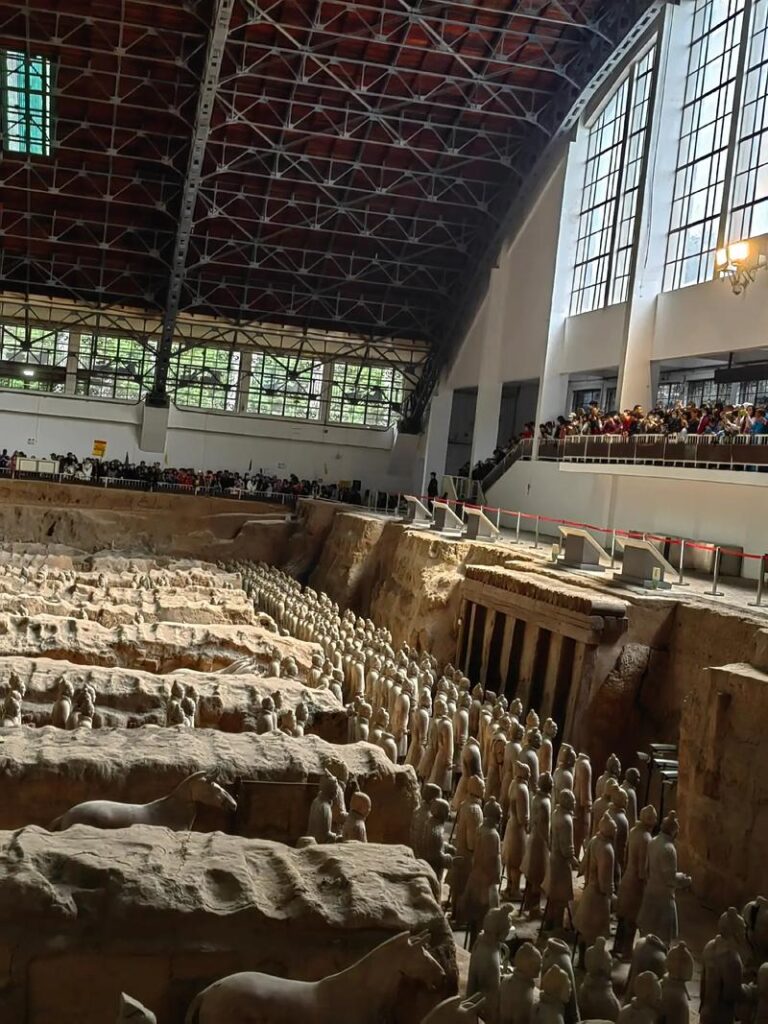
But remember, the “3.2 football fields” represent far more than just a numerical area. It symbolizes the unparalleled organizational capabilities, sculptural artistry, military technological achievements, and the ultimate pursuit of an eternal world of the Qin Empire in the 3rd century BCE. Standing at the edge of the pit, gazing at this vast army array that has slept for over two thousand years, you not only feel the vastness of space but also touch the depth of time and the magnificent chapter of human civilization. This is where the Terracotta Army truly captivates the heart as the “Eighth Wonder of the World.”
I hope this “ruler” made from football fields can help everyone better understand and imagine the grand scale of this underground army!

